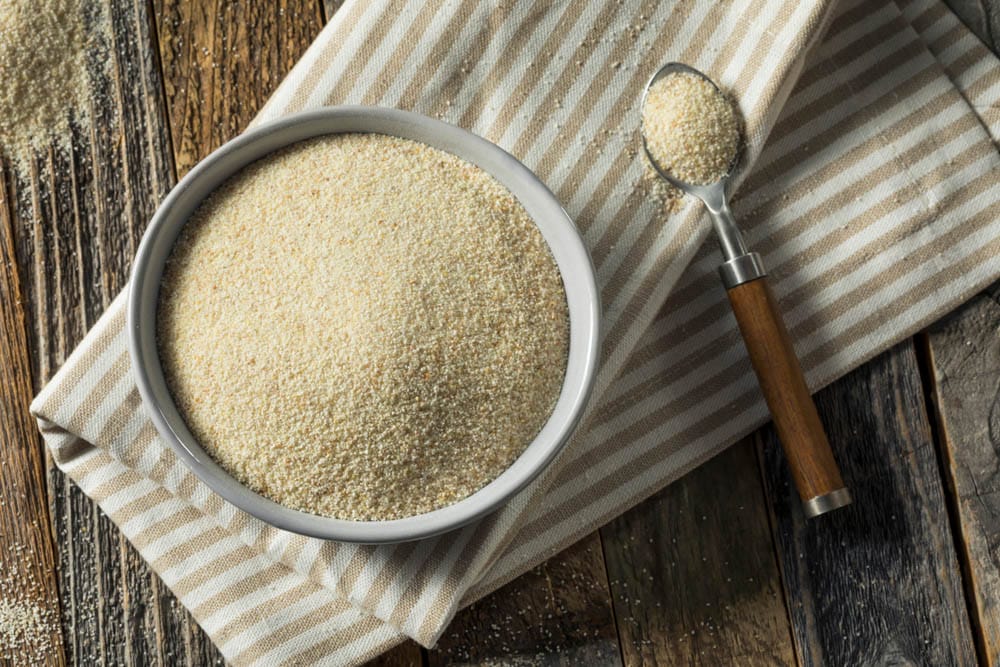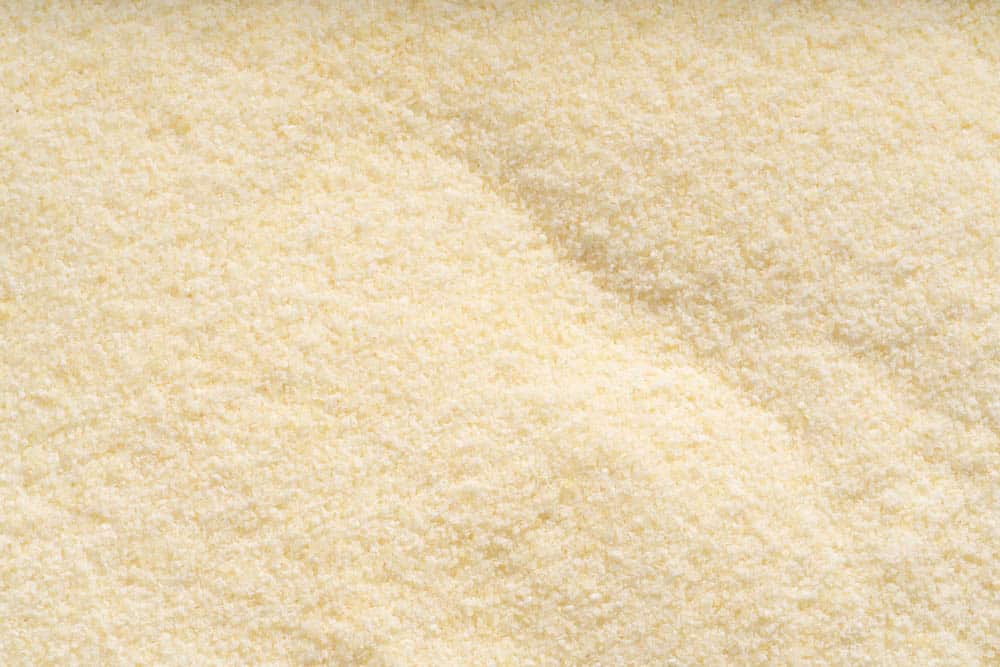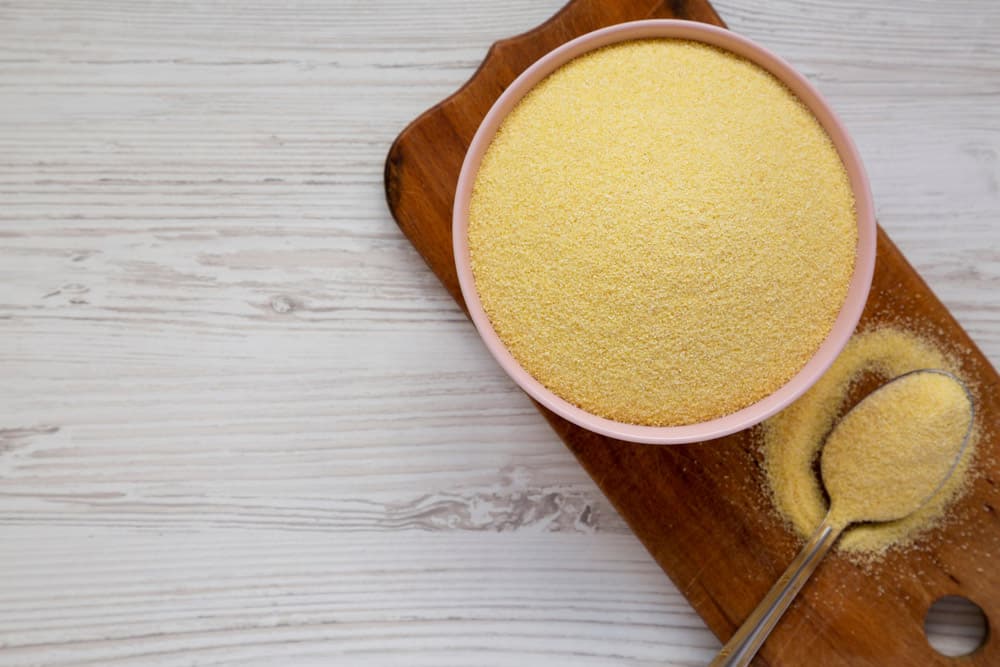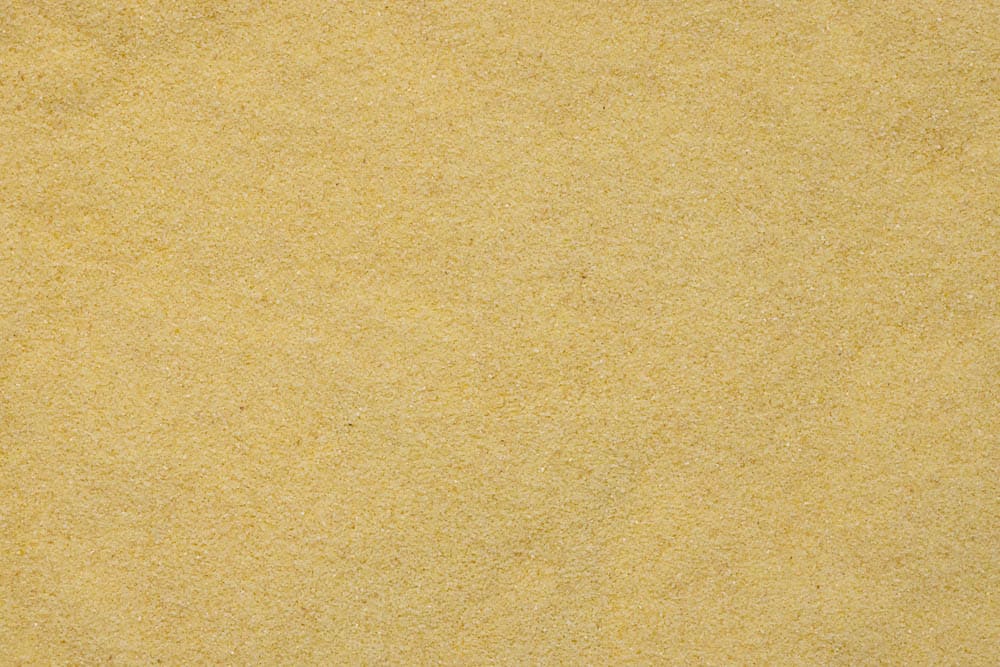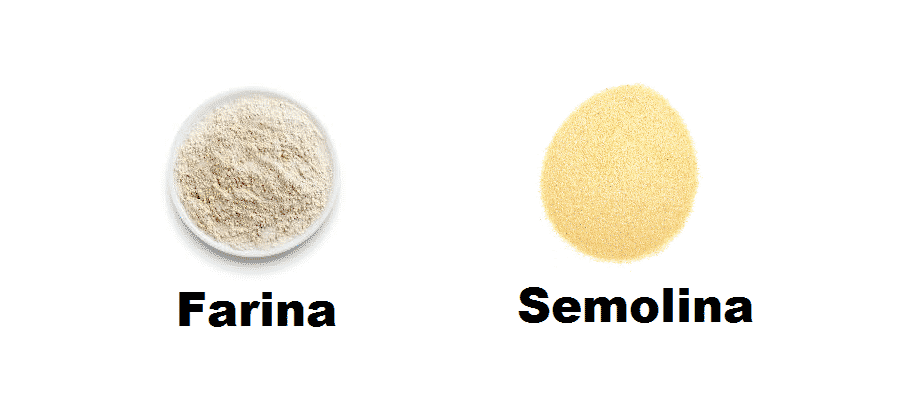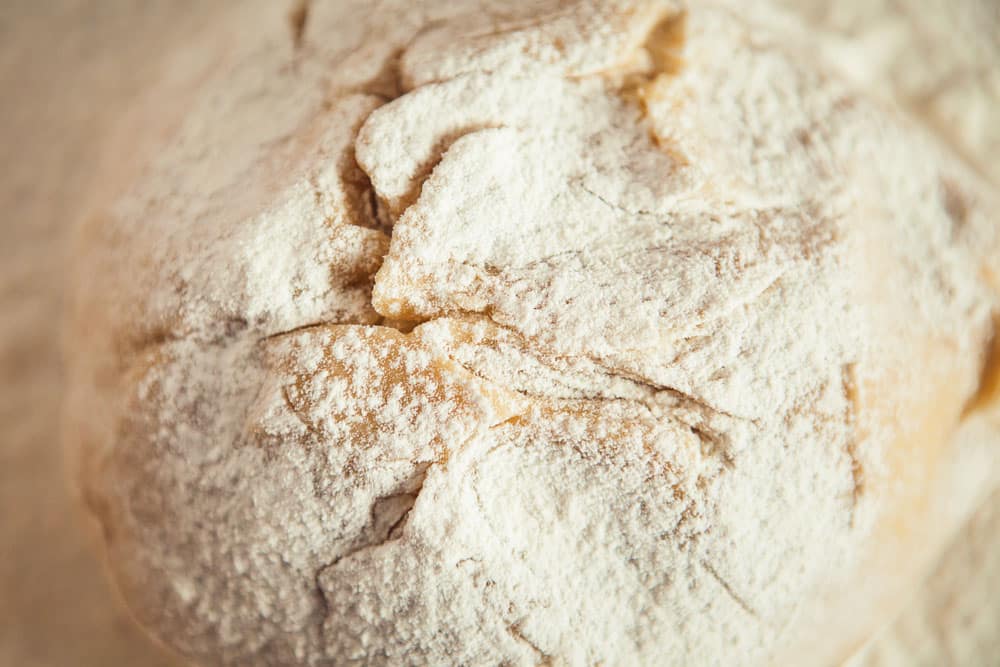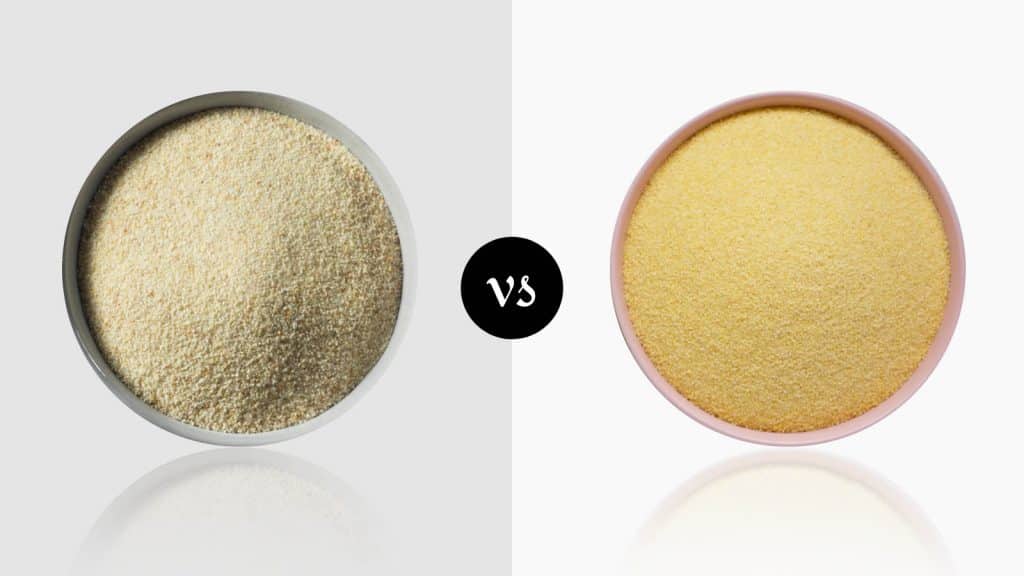
When it comes to making homemade pasta, there are several fantastic types of flour to choose from. Two of the most popular varieties are farina and semolina. Basically, farina is a cream of wheat that is extracted from soft wheat, whereas semolina is made from hard wheat.
At first, the grind appears to be the same, but there are definite differences between these two favorites. We’ll be taking you through an in-depth look at farina vs. semolina, explaining everything that you need to know to get the most out of each ingredient.
Farina Vs. Semolina Comparison
| Farina | Semolina | |
|---|---|---|
| Definition | Coarse Milled Wheat Flour Made From Wheat's Germ & Endosperm | Coarse High-Gluten Flour Made From Hard Durum Wheat Middlings |
| Varieties | Countless Varieties - Cream Of Wheat & Meal-O-Meal To Brands | Coarse Semolina, Fine Semolina |
| Texture | Coarse, Starchy - Coarser Than All Purpose Flour But Smoother Than Cornmeal | Gritty And Coarse |
| Color | Creamy Off-White With Yellowish-Brown Hue | Pale Beige |
| Affordability | Highly Affordable - Cheaper Than Semolina | Higher Priced Than Other Flours & Semolina |
| Uses | Porridge, Polenta | Pasta Dough, Bread, General Baking, Thickening Soups & Stews, Puddings & Desserts |
| Nutrition | 127 Calories, 0.8 G Fat, 0.2 Grams Saturated Fat, 55 Milligrams Potassium, 26 G Carbohydrates | 601 Calories, 1.8 G Total fat, 0.3 G Saturated Fat, 310.6 Milligrams Potassium, 122 G Carbohydrates, 7 G Fiber, 21 G Protein |
| Substitutes | Rice Cereal, Grits, Cream Of Buckwheat, Oatmeal, Cornmeal, Polenta, Couscous | Not Interchangeable With Semolina | Not Swappable For Semolina | Bread Flour, Whole-Wheat Flour, All Purpose Flour, Cake Flour, Cornflour |
Farina Vs. Semolina
They may both be made from wheat middlings, but farina and semolina are vastly different ingredients. Never be confused again, and always put each ingredient to its best use by going through our guide.
Farina
Most familiar with farina would have enjoyed it as a porridge for breakfast. However, those who know how to leverage the most from farina will end up serving it as a side dish similar to polenta.
Here’s a closer look at what farina is and the main differences between it and semolina.
What Is Farina?
Farina is a variety of coarsely milled wheat flour that’s made from the endosperm or inner hull of wheat. With a coarse consistency that’s similar but coarser than bread flour, farina is favored as a baking ingredient and tastes great as a porridge.
Varieties
Countless varieties of farina exist. Yet, certain brands are better known than others. There are many people who know this tasty variety of breakfast porridge as ‘Cream of Wheat’ or ‘Meal-O-Meal,’ which are two of the most popular and widely found brands.
Texture
The consistency of farina is coarse and starchy and best described as coarser than white flour and semolina but not as coarse as cornmeal. While powdery, farina isn’t quite as fluffy as cornstarch.
Color
The exact shade depends on the brand, but all farina is generally the same texture and color. Expect a creamy off-white color with a yellowish-brown hue. The off-white shade that’s lighter is cornflour but not as bright and has a matte quality.
Affordability
Farina is one of the most affordable varieties of flour available. It is far cheaper than cornflour and cheaper than semolina as well.
Uses
Farina tends to be economically priced and is typically used to make polenta and porridge. It is also used to bake. It can also be prepared in a similar manner to the Italian porridge polenta and the Brazilian side-dish farofa.
Although Italian chefs forbid the act, farina can be added to pasta dough to enrich the flavor while altering the texture and making it both denser and chewier.
Nutrition
Out of all its compounds, farina contains high concentrations of carbohydrates and iron. A good brand often delivers up to half the recommended daily value of iron in a single serving. Out of all its compounds, farina contains high concentrations of carbohydrates and iron.
A good brand often delivers up to half the recommended daily value of iron in a single serving. A cup of cooked farina contains 127 calories, 0.8 grams of fat, 0.2 grams of saturated fat, 55 milligrams of potassium, and 26 grams of carbohydrates.
Substitutes
Don’t make the mistake of using semolina in the place of farina – they are not interchangeable despite being made using a similar process. The best substitutes for farina are rice cereal, grits, cream of buckwheat, oatmeal, cornmeal, polenta, and couscous.
Semolina
Anyone who considers themselves experienced with pizza and pasta would have worked with semolina before. It’s actually just as useful in desserts. Here is a breakdown of all the main characteristics of semolina and how you can best use it in your cooking.
What Is Semolina?
Semolina is a coarse high-gluten flour made from wheat middlings, which are the germ and endosperm of durum wheat.
Unlike farina, semolina is more widely used in pasta than it is in baking, but certain dishes like pizza dough do come out tasty and textured when using a blend of semolina and regular flour. When wheat is milled, ground, and finely sifted, it becomes wheat flour.
However, on the other hand, when the same wheat middlings is coarsely sifted, semolina is obtained.
Varieties
You will find coarse semolina and fine semolina available. Fine semolina’s texture is vastly different and much smoother, but all semolina has a coarse, rough grittiness to some degree.
Texture
The texture of semolina is gritty and coarse. Expect a coarseness that’s coarser than regular flour, cornmeal, and farina that’s almost sandy in its consistency.
Color
While the shade and paleness vary from brand to brand, semolina is beige with a hue bordering on yellow.
Affordability
As a flour that’s higher in gluten than most regular varieties, semolina is more expensive than cake flour, all-purpose flour, bread flour, and farina but slightly more affordable than ultra-fine cornflour.
Uses
Some chefs use semolina to make bread, but it is far more widely used in pasta dough. When semolina is mixed in pasta dough, it grants a very chewy texture thanks to being gluten and fiber-rich. Semolina can also be used to make pudding and other desserts.
Finally, it can also thicken up soup and stews effectively.
Nutrition
Semolina has low saturated fats, sodium, and cholesterol with zero trans fats. There is also a fair share of Vitamin B Complex, Vitamin E, and folic acid.
A cup of semolina contains 601 calories and supplies 1.8 grams of total fat, 0.3 gram of saturated fat, 310.6 milligrams of potassium, 122 grams of carbohydrates, 7 grams of fiber, and 21 grams of protein.
Substitutes
Even though they’re made from the same part of wheat, semolina and farina are not interchangeable. The best substitutes for semolina will be high-gluten flour types. This makes bread flour the top substitute in most cases, with whole-wheat flour coming in a close second.
All-purpose flour or cake flour can be used in a pinch. Alternatively, cornflour is another suitable alternative, but it is gluten-free.
What Is The Difference Between Farina And Semolina?
The main difference between farina and semolina is that farina is coarse flour extracted from soft wheat that’s had its endosperm removed, whereas semolina is a variety of coarse flour that’s extracted from durum wheat or hard wheat middlings.
Farina is better for cooking into a porridge-type meal, whereas semolina is best for baking, pasta, and puddings.
Which is Best Between Farina Vs. Semolina?
There are many outstanding uses for each of these tasty flour types, but farina excels as porridge and an ingredient for crusts, ensuring that they never end up mushy thanks to the way that it absorbs moisture well.
As for semolina, it grants a smoother texture when making porridge but is the ultimate ingredient for pasta and a must-have for many chefs when making pizza. Just a little infuses semolina flavor and grants the dough the ideal springiness.
